Rats in France: Types, Facts & Tips for Homeowners
-
Pete Ortiz
- Last updated:
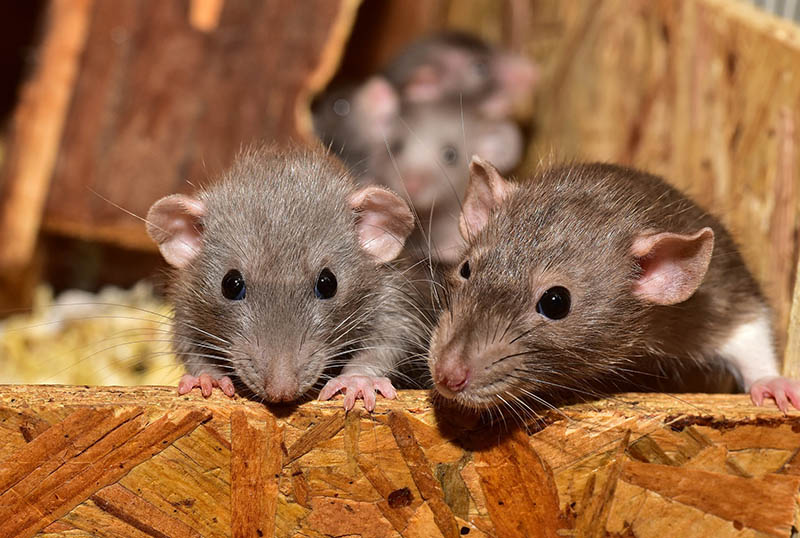
France is popularly known as the perfect travel destination due to its beautiful landscapes, décor, culture, and lifestyle. Unfortunately, this “city of love” has, for the past few years, been experiencing the worst rat infestation in decades. There are several chilling videos shot near the River Seine flowing between Pont Royal and the Musee d’Orsay showing swarms of rats in a city dumpster fighting over food scraps.
These rodents have become such a problem in Paris that the city set aside about €1.5 million to help fight the rat infestation. Unfortunately, they continue to thrive, and since they are disease carriers, they can bring about health implications if they access your living space.
In this article, we will discuss the common types of rats found in France and the different facts about them. We will also highlight homeowner tips for eliminating and preventing rats from your home. Read on to learn more.
The 4 Common Types of Rats in France
There are more than 50 rat subspecies in the world. Each of these rodents has unique diets, behavior traits, locations, and appearances. It can also transmit different diseases. With this information, you can identify the kind of rat lodging in your home and the best way to get rid of it.
1. Roof Rats

Also known as black rats, the roof rat species is the most populated in the world. These rats get their name from their ability to climb on objects. You can easily spot a roof rat climbing over posts, trees, walls, and buildings to access homes and other premises.
These are also the most destructive of their species. They use their strong sharp teeth to gnaw through different materials such as copper, soft cement, and aluminum.
- Appearance
On average, roof rats can grow up to 16 inches long (up to the tail tip) and weigh about 225–350 grams. Usually, this rat species spots a black or dark grey fur coat, but some roof rats have brown fur with a white strap on the underbelly.
Furthermore, their tails tend to be longer than their bodies and skinnier than their Norwegian cousins. Black rats also have narrow heads with long whiskers and excrete spindle-shaped excrement that measures up to 12.5 millimeters.
- Behavior
The roof rat diet consists of cereals, vegetables, and fruits. These rodents can dumpster-dive for leftover food scraps, feeding several times a day. This rat species is also very social and live together in family clusters. They are fiercely territorial, and the male rats are usually spotted fighting for dominance, especially during the mating season. They are also nocturnal creatures and can be spotted running, climbing, jumping, and swimming.
- Lifecycle
Roof rats have a gestation period of 3 weeks with 4–6 litters per year. Each litter can produce between six to eight kittens. After birth, the kittens can mature in about 5 months and can live for up to 9–12 months.
2. Norway Rats
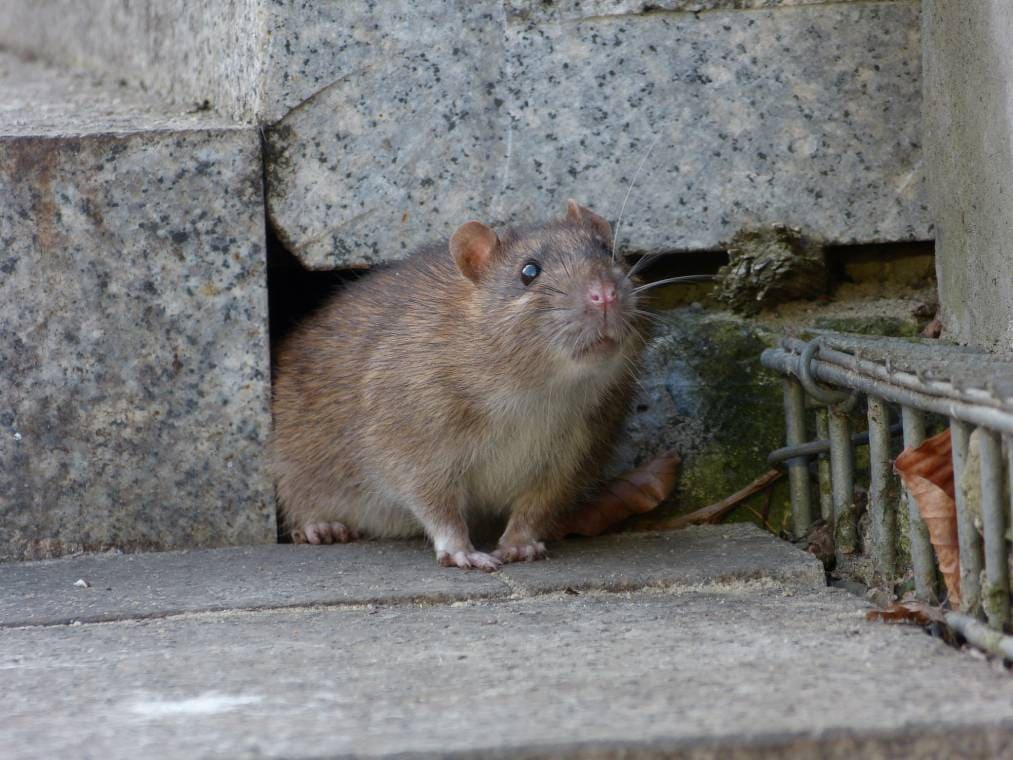
As the name suggests, this rat species is Norwegian. However, this is a misname because Norway rats are the most populated rodent species in the world. They can be spotted in almost any country.
Norway rats have different names, depending on their country of residence. Other names that this rat species is identified with include brown rats, sewer rats, wharf rats, water rats, and barn rats.
They pile up food reserves before winter and can dig burrows with emergency exits from where they can make their leave at the first sign of danger. Sewer rats are mostly found in places with minimal human encounters such as waste garbage, under railroad bridges, and under concrete.
- Appearance
An adult Norway rat can grow up to 7–9 inches long, including the tail, and weigh 350 grams. They have shaggy, coarse, and brown fur. Some Norway rat subspecies even have some white pigmentation on their abdomen. Unlike roof rats, their tails are shorter than their body size. Their faces feature rounded ears and small black eyes. Furthermore, their excrement is capsule-shaped and measures about 0.75 inches long.
- Behavior
Like many rat species, sewer rats are nocturnal and roam at night in search of meat, fish, dry dog food, and flour. With their sharp incisors, these rats gnaw on plastics, pipes, utensils, and wood materials. They tend to carry fleas and mites in their fur and can transmit diseases through biting, urine, or their droppings.
This subspecies also lives in families with males mainly protecting the rest. They are notorious for digging large holes in objects. However, they can still squeeze through tight openings to enter homes. Moreover, they can run, swim, jump and climb. However, they are not as skilled at jumping as their black rat counterparts.
- Lifecycle
Norway rats also have a 3-week gestation period and can produce three to six litters per year. Each one can have as many as eight kittens. The kittens usually take between 2–5 months to reach reproductive maturity and a life span of 6–12 months. However, if the environmental conditions are ideal, they can live longer.
Other Rat Species in France
3. Wood Rat
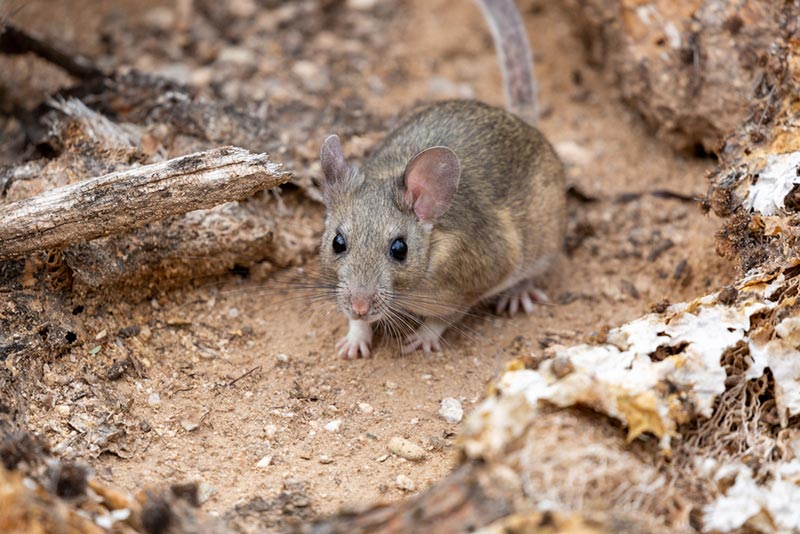
Though not as common as Norway and black rats, wood rats are also common in France. On average, they weigh about 400 grams. However, some subspecies like the Arizona rat can weigh less than 132 grams. How big they grow will depend on their location. For instance, desert wood rats are larger and have bushier tails than mountain wood rats.
The diet of wood rats consists of nuts, seeds, leaves, insects, and even smaller mammals. Their tail tends to be dense but not very bushy and has white feet and large eyes. Their fur coat is also long, thick, and soft whose color ranges between reddish-brown, gray, and white. Some even have white rust on the abdomen.
Wood rats are dangerous rodents to have in your living area because they carry Arenavirus, which can be transmitted through the air where the rat has left urine or its droppings. They can also transmit Hantavirus, which can be fatal to humans. Furthermore, wood rats spread salmonella, typhoid, trichinosis, and bubonic plague.
4. Marsh Rice Rat
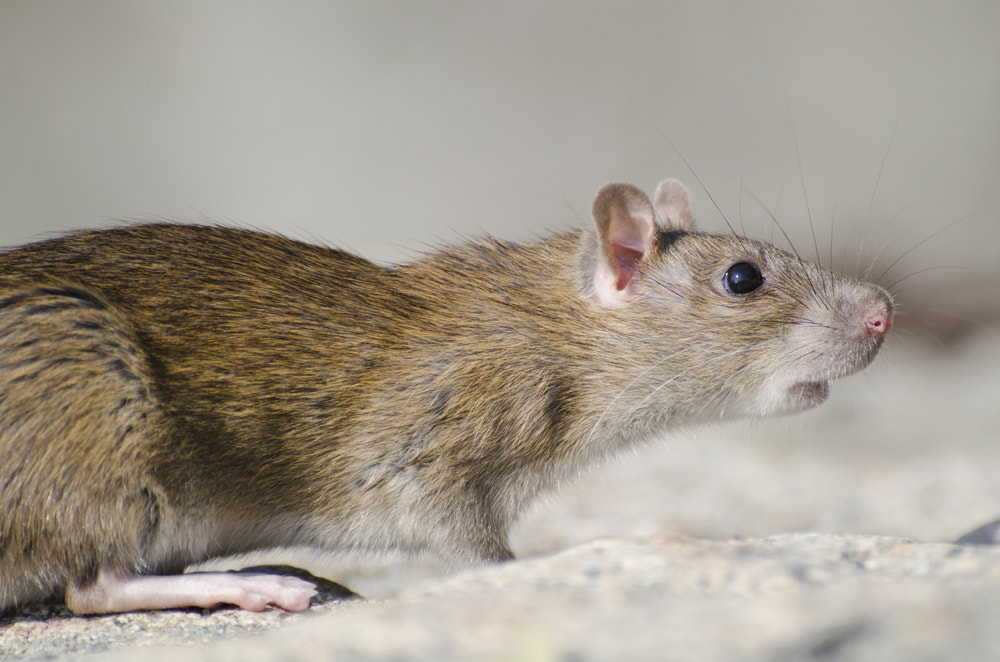
Most people confuse marsh rice rats with black and brown rats because they are almost the same in appearance. The only difference is that marsh rice rats have more color contrast on their heads, stomachs, and bodies. This rat subspecies features a grayish-brown underside, light air on their ears, and small cheek pouches.
Marsh rice rats are significantly smaller than other rat species and can only grow up to 12 inches in length or less. They also thrive in damp wet areas near large water bodies like lakes or the ocean. Their diet includes fungus, insects, rice, marsh grass, small fish, and even fiddler crabs.
They are known carriers of the Bayous virus which can result in Hantavirus infections. They can also transmit Bartonella and Lyme disease.
Tips for Homeowners
If rats have infested your home, chances are high that you will see signs of their presence before spotting the rodent itself. Therefore, it’s helpful to know the signs of a rat infestation in your home to take appropriate measures to get rid of them efficiently.
The most common signs of rats in your living area are rat droppings. You will likely notice them in your kitchen, cabinets, and pantry.
Find a pest-control specialist in your area, and get free, no-commitment estimates for your project.Consult a PEST-CONTROL expert

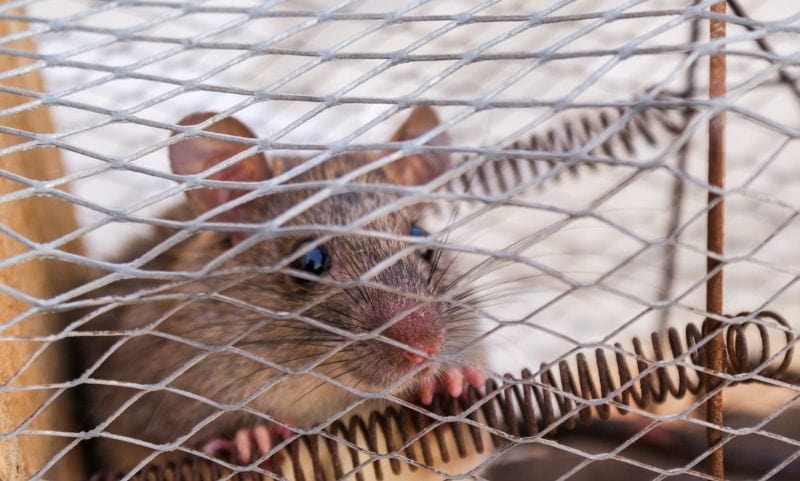
How to Get Rid of Rats
Once you have ascertained the rat presence in your home, you need to figure out how best to remove them. There are many methods that you can use which range from DIY home treatments to contracting a professional pest control specialist.
You could also opt to use the more traditional cheese trap to get rid of rats from your home. Your choice will depend on your budget, your needs, and whether you want to capture and release or capture and kill.
- Snap Traps: This is perhaps the most common rat trap available in the market. As the name suggests, this trap features a metal bar that snaps shut immediately after the rat triggers it by eating the bait, killing the rat immediately. This type of trap is popular because it is cheap and reusable
- Glue Traps: Instead of using a spring metal bar to trap the rat, this trap uses sticky glue pads to catch them.
- Electronic Traps: Thanks to technological advancements, you can get rid of rats from your home using non-toxic means that are also humane. Electronic traps rely on high-voltage electric shock to get the job done.
- Live Traps: You can also utilize live traps to capture rats, but it is an unpopular method among most homeowners. Granted, it is a humane method of controlling rat infestations, but most people don’t know how to handle the rat as soon as it’s trapped inside a cage. If you intend to capture and release them, make sure you release them far away from your home. This may be counterproductive considering captured and relocated rats rarely ever survive for long.
Thanks to technological advancements, you can now get rid of rats from your building using ultrasonic repellents. This gizmo works by emitting high-frequency soundwaves that make rats and other rodents very uncomfortable. So, instead of killing your unwanted visitors, you can use soundwaves to keep them away from high-risk areas such as the attic.
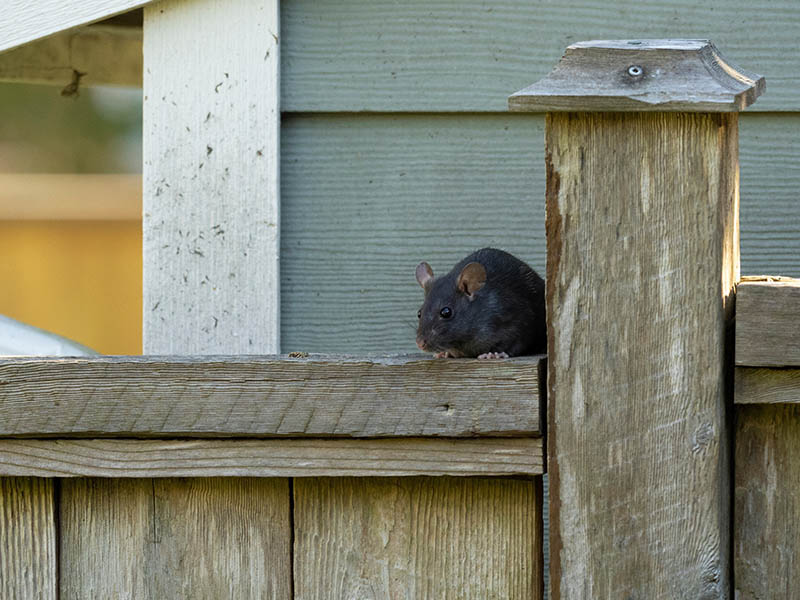
How to Prevent Rats From Accessing Your Home in the Future
Trapping and killing rats in your home are just a band-aid solution to a rat infestation. In the long run, you will need to formulate a more direct, aggressive, and strategic approach to getting rid of rats from your home for good. Granted, the best way to successfully deal with a rat infestation is to hire professional pest control services. Yet there are things you can do to supplement the methods used by experts.
Block All Entry Points
As soon as you eliminate rats from your premises, immediately block up any entryway which rats use to access your home. This can be quite tedious and time-consuming, but do not be tempted to skip this step. Rats can squeeze through tiny spaces, and if you do not thoroughly inspect your home and block the entry points, all your hard work will have been for nothing.
Inspect areas such as cracks in the wall, windows, and holes in the garage or roof. If you notice any signs of their presence, seal up the holes. You can use caulk or steel wool to clog small holes. However, you will need copper mesh, hardware cloth, a screen, or fitted foam to cover up larger openings.
Trim Trees and Vines
As earlier mentioned, rats are excellent climbers and often rely on climbing plants and tree branches to reach entryways on the roof. To prevent rats from accessing your home through the attic, ensure that you regularly trim branches hanging near your house. You should also trim any shrubbery or hedges and clear any climbing vines growing near your house.
Get Rid of Debris From Your Compound
If you have been postponing cleaning your yard, it’s about time you got to it. When branches, piles of wood, or any rotting wood accumulate in your compound, they attract rats. However, getting rid of this debris will reduce the rat’s hiding places in your yard.
Cover Trash Bins
An uncovered bin or half-closed trash cans could be attracting rats into your compound. Even if your trash always remains closed, rats can still find a way into your trash. Therefore, it’s best to tightly secure the trash lid into place using bungee cords or placing something heavy on top. Also, ensure that the area surrounding your trash can always remains clean.
Conclusion
France is a picturesque country that attracts millions of visitors every year. Unfortunately, like most urban areas, this city also grapples with rat infestations. In the last several years, rats overrunning the country have become a reality with many gardens and parks riddled with holes. The most common rat species in France are sewer rats, Norway rats, marsh rice rats, and wood rats.
These rats are not only destructive rodents but also disease carriers that they transmit through urine, droppings, and biting. So, if you notice any sign of their presence, exterminate them immediately. You can do this by hiring a professional or employing DIY measures, such as setting traps or using repellents.
As soon as you remove them, cover the entryways, cover your bins, trim vines and branches near your house and remove debris from your compound. This way, you will discourage them from coming back to your home.
Featured Image Credit: sipa, Pixabay
Contents



